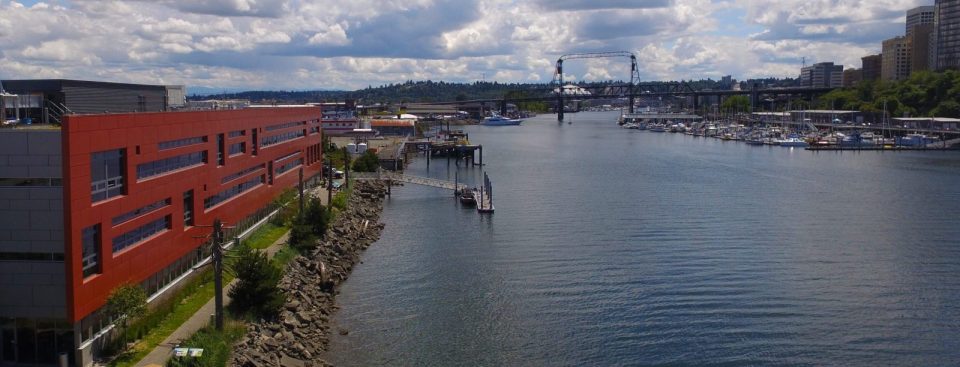Right now, researchers across Puget Sound are carefully measuring the salinity and temperature of the water, searching for harmful algal blooms and studying the feeding patterns of endangered orcas.
They are testing the effects of ocean acidification, counting rockfish and checking the health of our declining kelp forests.
Their scope includes salmon genetics and invasive crabs, the flow of rivers and streams. They study thousands of different species and thousands of miles of winding shoreline across a region the size of a small state. Within this region are two pristine national parks that border on an urban population of millions. There are even three active volcanoes.
To paraphrase Walt Whitman, Puget Sound is large. It contains multitudes.
As you might expect, managing an ecosystem of this scale is a huge effort. There are hundreds, if not thousands of people working to understand and protect Puget Sound. Keeping track of what they do and what they find out is critical. Science is meant to guide policy decisions that support a healthy ecosystem, but that outcome is not a given. For that to happen, researchers in Puget Sound need to collaborate and share their knowledge.
Our goal at the the Puget Sound Institute is to help with this process. We translate technical information for both scientists and policy makers, and our work is described in a new paper written by our group last month for the journal Environmental Science & Policy. The paper illustrates what we do as an organization, but also the contributions of the many participants in the larger effort to protect and restore Puget Sound.
Among the paper’s highlights are overviews of the rich history of science-informed restoration programs in Puget Sound and a detailed description of the framework of current recovery efforts. Much of that work has been supported by the Environmental Protection Agency’s National Estuary Program which oversees 28 designated estuaries of national significance, including Puget Sound. The paper describes the extensive efforts led by the EPA and the Puget Sound Partnership to develop ecosystem indicators to measure the health of Puget Sound, as well as the recent implementation strategies that guide and fund recovery efforts.
We also describe how our own work supports these large scale partnerships and collaborations. The syntheses created by the scientists at the Puget Sound Institute, for example, inform recovery strategies that route millions of dollars in funding for Puget Sound, from support for habitat restoration to the cleanup of toxic chemicals. Less formally, we show how our articles and blogs can catch the national interest or spark congressional testimony.
Puget Sound was recently identified as one of 25 international “bright spots” for knowledge exchange at the marine science-policy interface. Our work benefits from the work of many and we hope we can build upon that foundation. Our paper is now online, and we have created an extended abstract available on the Encyclopedia of Puget Sound. You can also view an archived presentation about the paper by its lead authors Andy James and Tessa Francis at last month’s virtual Salish Sea Ecosystem Conference.
Citation:
James, C. A., Francis, T. B., Baker, J. E., Georgiadis, N., Kinney, A., Magel, C., Rice, J., Roberts, T. & Wright, C. W. (2022). A boundary spanning system supports large-scale ecosystem-based management. Environmental Science & Policy, 133, 137-145.
